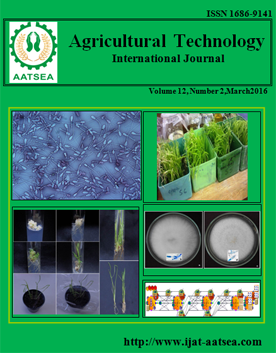Artificial neural networks model: reliable forecasting tool in cocoa postharvest losses reduction
Main Article Content
Abstract
Article Details

This work is licensed under a Creative Commons Attribution-NonCommercial-NoDerivatives 4.0 International License.
References
ACIAR (2001). Postharvest Newsletter. A publication of the Australian Center for International Agricultural Research, Postharvest Technology Program. 58 pp.
Adewumi, I. O. (2009). Using genetic algorithm for solving traveling salesman problem. B.Sc Project Submitted to the Department of Industrial and Production Engineering, Faculty of Technology, University of Ibadan, Nigeria. 25 pp.
Anderson, J. A. and Rosenfeld, E. (1987). Neurocomputing: Foundations of Research. Cambridge, MA: The MIT Press.
Aremu (2012). Advance agricultural storage, Department of Agricultural & Environmental Engineering, Faculty of Technology, University of Ibadan, Nigeria.
Castiglione, F. (2001). Forecasting price increments using an artificial neural network. In Complex Dynamics in Economics, a Special Issue of Advances in Complex Systems 3:45-56.
Jane, R. O. (2004). The challenges in reducing postharvest losses: Lessons from the PNG cocoa and coconut industries. Seminar Presentation on Cocoa and Coconut Postharvest losses.
Krose, B., and Van der Smagt, P. (1996). An Introduction to Neural Networks 13 pp.
Minsky, M. and Papert, S. (1969). Perceptrons, MIT Press, Cambridge, M. A.
Orisaremi, K. (2009). Artificial neural networks for forecasting in production (A case study of a cocoa processing firm). Department of Industrial and Production Engineering, Faculty of Technology, University of Ibadan, Nigeria. 4 pp.
Parker, D. B. (1985). Learning logic: Technical Report TR-47. Center for Computational Research in Economics and Management Science, MIT, Cambridge, MA.
Werbos, P. J. (1974). Beyond regression: New tools for prediction and analysis in the behavioural sciences . Harvard University.


